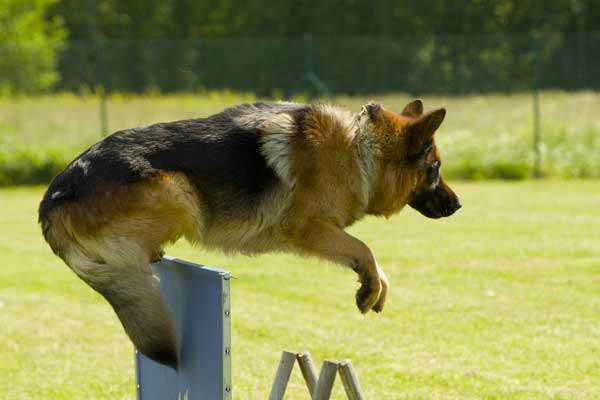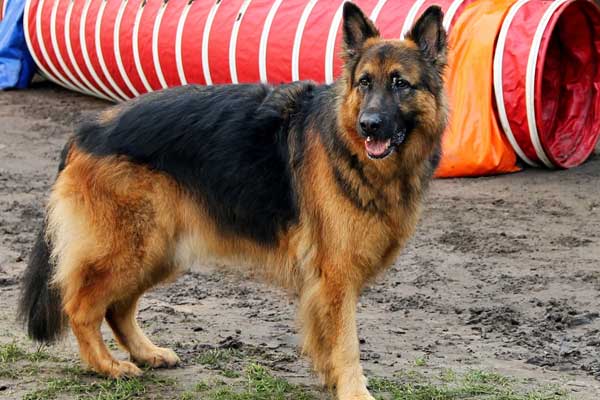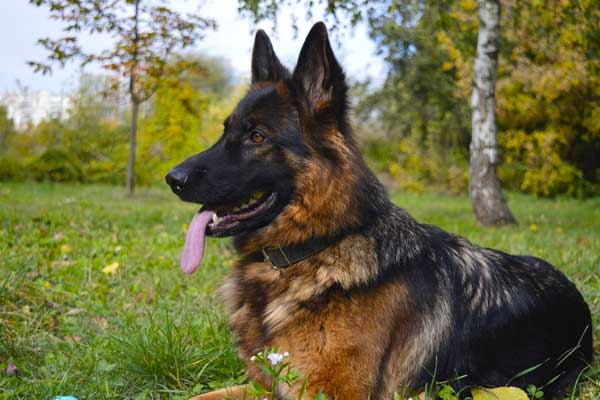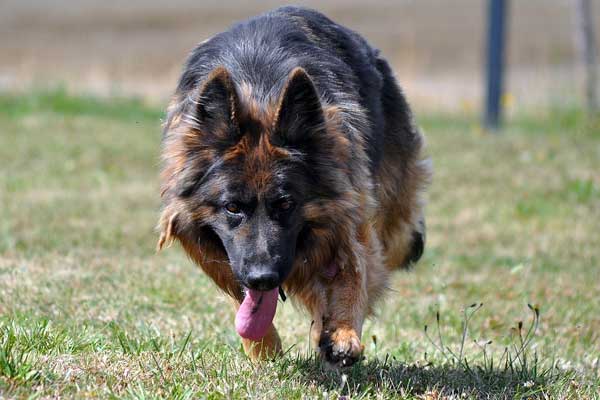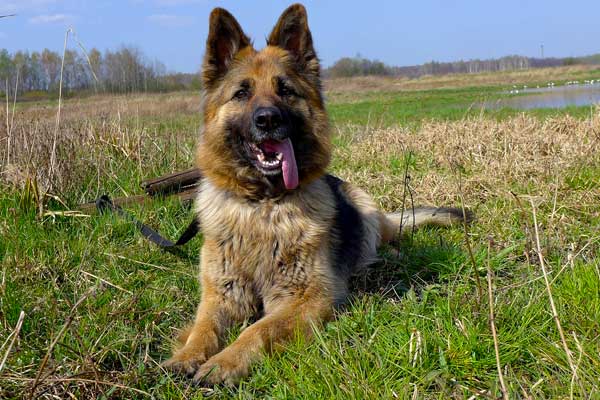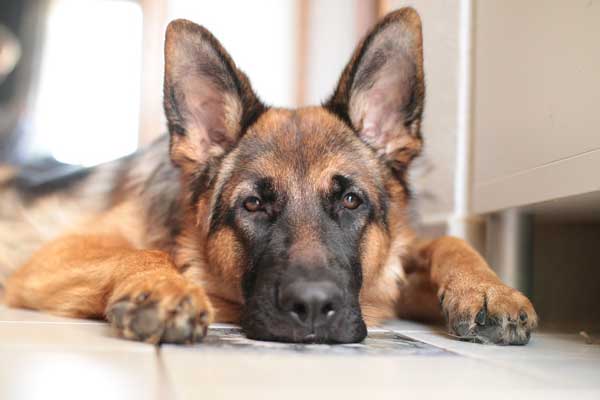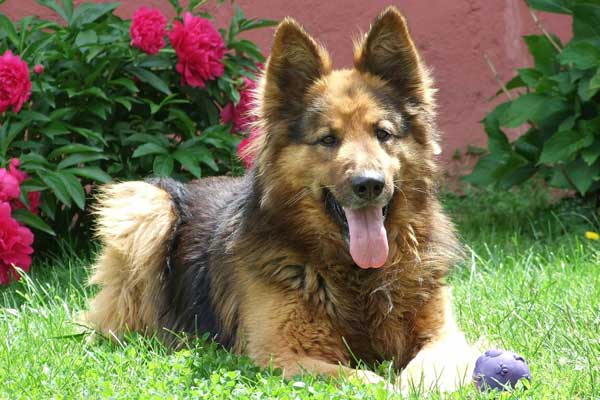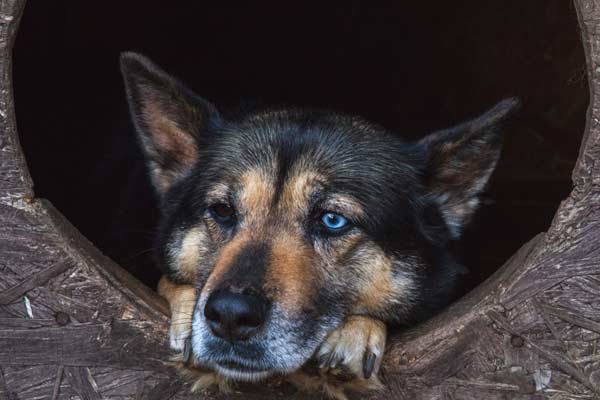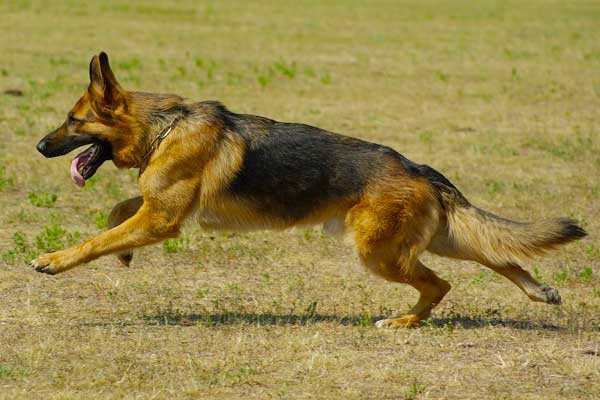Are German Shepherds Easy to Train? Absolutely!
German Shepherds are known for their intelligence, loyalty, and strong work ethic. But what about trainability? Are German Shepherds easy to train or not so much?
The answer is YES—you can quickly train your German Shepherd with the right approach. Let’s examine the methods and tips you should use when training a GSD.
5 Reasons Why German Shepherds are Easy to Train
German Shepherds are known for their intelligence, loyalty, and trainability. But why are these dogs so easy to train?
It’s simple: they have a combination of qualities that make them ideal candidates for training. From their natural obedience to their eagerness to please, here are five reasons German Shepherds make the best trainers.
Obedience Comes Naturally
German Shepherds have an innate sense of obedience that makes them excellent candidates for training. They’re naturally obedient and loyal, meaning they’ll take their owners’ commands without hesitation.
This quality also makes them great at following complex instructions and responding to verbal cues quickly and accurately.
Highly Intelligent
German Shepherds are known for their intelligence, which is one of the main reasons they’re so easy to train. These dogs can understand complex commands and can remember them over time.
Consistent training allows them to learn new behaviors quickly and retain information even after long periods without reinforcement.
Eager To Please
German Shepherds are highly motivated by praise and rewards, making them eager to please their owners and trainers.
This eagerness gives them a strong desire to learn new behaviors, which makes it easier for owners to teach them new skills or reinforce existing ones with positive reinforcement techniques like treats or toys.
Strong Bond With Their Owners
German Shepherds form strong bonds with their owners, which makes it much easier for owners to train their dogs effectively.
Because these dogs trust their owners implicitly, they will be more willing to follow instructions and respond positively when given commands or rewards.
This bond also makes it easier for owners to build a trusting relationship with their pets that will last a lifetime.
Highly Adaptable
Last but not least, German Shepherds are highly adaptable animals that thrive in many different environments and situations.
This means they can quickly adapt to varying types of training methods and changes in routine or environment without becoming stressed or anxious—making it easy for owners to keep up with their pets needs while still providing consistent training sessions over time.
Training the German Shepherd – The Basics
German shepherds can be stubborn and headstrong like any other canine breed. You can turn your rambunctious pup into an obedient puppy with patience and consistency.
When training a German shepherd, some basics must be established for your puppy to understand and obey commands. Let’s dive into the basics of training a German shepherd!
Establishing Commands
The first step in obedience training is establishing commands. Consistency is key here! You must decide what words or phrases your pup wants to respond to when they hear them.
For example, “sit,” “stay,” “come,” and “down” are all basic commands that are often used with pups of all breeds. It’s important to remember that whatever command word or phrase you choose should not change throughout the training process.
Using Leash Corrections
In addition to positive reinforcement, leash corrections help teach dogs to obey commands without fail. A leash correction is simply tugging on the leash gently when giving a command.
This helps reinforce that when given this command; their behavior should immediately change and follow through with what was asked of them—no questions asked! Ensure not to overdo it; too much pulling on the leash will only confuse your pup and could cause harm if done incorrectly.
Positive Reinforcement Training
When it comes to training your German Shepherd, positive reinforcement is critical. This means rewarding your pup with treats, praise, and other rewards when they do something you want them to do.
Positive reinforcement helps build trust between you and your dog while teaching them that they’re being rewarded for good behavior.
Start Early
German Shepherds are brilliant dogs and can learn quickly, so it’s essential to start training early to get the most out of their potential.
You can start as soon as 8 weeks old (or earlier!) by teaching basic commands such as “sit” or “stay. Starting early will also help prevent bad behaviors from developing as your pup ages..”
Make Training Fun
For any breed of dog, training should always be fun! Games like fetch or tug-of-war are great ways to keep your GSD engaged while reinforcing their learned commands.
Ensure you incorporate plenty of playtime into your training sessions—your pup will be more engaged if they have fun while learning new things.
A Pup-prentice’s Guide to Training Your German Shepherd
Are you a first-time dog owner struggling with your pup’s training? If you answered yes, then this blog post is for you. You may be familiar with the phrase, “you can’t teach an old dog new tricks,” but it doesn’t apply to all dogs.
If you have a German Shepherd at home, it’s time to learn some common mistakes first-time owners make when training their pups.
One of the most common mistakes newbies make is that they need to give the pup more time to learn and practice. Patience is key! puppyDon’t expect them to master commands within days or weeks—it usually takes months for a pup to learn a command correctly.
Remember, your dog has just arrived in your home, and adapting to its new environment can take time.
Another mistake is that people need to be more relaxed during training sessions. Yes, it’s essential to be consistent and firm when teaching commands, but it should also be enjoyable for you and your pup!
If your puppy feels like they are being punished every time they get something wrong, it will become uninterested in training – which will impact its overall progress.
Instead, focus on positive reinforcement methods such as rewards or verbal praise whenever your pup does something correctly.
Finally, many first-time owners need to remember mental stimulation during training sessions. Just like humans need intellectual stimulation, so do dogs!
If you want your German Shepherd puppy to learn faster, try incorporating games into their daily routine – these activities will engage their minds while strengthening the bond between the two of you. And who knows – maybe even teach them a few extra tricks!
Training Your German Shepherd – It’s Easier Than You Think!
German Shepherds are famously intelligent, loyal, and hard-working dogs. While they may seem intimidating at first glance, any dog can become an obedient companion with the proper training. They make great pets and are a favorite among many pet owners.
So, if you’re wondering, “how long does it take to train a German Shepherd?” we have the answer.
Are German Shepherds Easy for Beginners to Train?
The short answer is yes! It is important to note that all dogs learn differently, so it may take trial and error to determine what works best for your pup.
It is also helpful to remember that these dogs require consistency and routine—they need to know precisely what is expected of them to learn properly. With consistency and patience, you can train your German Shepherd in no time.
Are German Shepherds Easy to Potty Train?
Potty training can be one of the most challenging tasks for your pup. Fortunately, potty training your GSD can be relatively simple with patience and dedication! The key here is consistency; establish a routine for your puppy and stick with it!
Taking them out regularly throughout the day will help them build awareness of when they should go outside—and where they should go if they choose not to follow commands.
Positive reinforcement goes a long way when potty training; rewarding good behavior with treats or verbal praise will speed up the process!
German Shepherd Training Gear: The Essentials
Training a German Shepherd is no small feat. It takes time, patience, and the right equipment.
Outfitting your pup with the proper gear not only helps make training more effective, but it can also make it fun for both you and your dog! Look at some essential German Shepherd training gear you’ll need to start.
Leash and Collar
Every pup needs a leash and collar when on the town! A sturdy leash will help keep your dog safely by your side, while a comfy collar will be comfortable for them to wear.
When choosing a leash and collar, ensure they are strong enough to handle an active dog like a German Shepherd.
You want something that will only break or tear easily if they pull too hard or get overly excited while on their walks.
Puller Training Rings
The puller training rings are designed specifically for larger breeds like German Shepherds. These rings attach securely to your pup’s collar so you can correct them when they start pulling during their walks. This is especially useful if you have an energetic puppy who likes to wander off or pull too hard on the leash.
Dog Training Tunnel
German Shepherds love playing with tunnels! This type of agility equipment is excellent for teaching your pup to follow commands and encourages them to stay focused.
It also is a perfect way for them to burn off extra energy and have fun simultaneously! Plus, it’s lightweight and easy to transport when taking your pup’s training on the road.
Behavioural Training Clicker
Clicker training is one of the most popular methods of teaching new behaviors to dogs. This reward-based training relies on a clicker to capture moments when your pup does something correctly or as expected.
The clicker’s sound indicates that your dog has done something right, and they receive a reward in response (usually treats).
Dog Whistle
You can use a dog whistle as an alternative way to communicate with your pup while they’re learning or even when they’ve already mastered specific commands. It produces sounds at different frequencies only dogs can hear, making this tool excellent for long-distance commands or general recall.
Nero Ball Classic K9 Ball on a Rope
This classic toy teaches basic obedience commands like ‘fetch’ and ‘drop it’ and provides stimulating playtime for your pup between lessons. As a bonus, it also helps strengthen their jaws and teeth during play!
Flyer Durable Flying Discs
Flying discs are another excellent option for providing physical and mental stimulation during breaks between lessons. They can be used indoors and outdoors, offering plenty of versatility while efficiently transporting.
Training treats
Rewards are essential when it comes to successful dog training! Look out for high-quality options made with natural ingredients, like those from Nero Ball K9! Treats can motivate your pup during lessons and reward them when they do something right or complete a task successfully.
Food & water dishes
Keeping hydrated is essential during sessions and afterward, so ensure you always have food & water dishes handy! A portable water bottle is also helpful if you plan to take your pup on adventures or regularly go out together.
Conclusion
Training a German shepherd doesn’t have to be daunting; with patience and consistency, you can quickly teach your pup to obey commands and stay out of trouble!
Establishing basic commands is the crucial first step in this process, followed by positive reinforcement and occasional leash corrections when needed.
With these tips, you’re well on your way toward having an obedient puppy who loves learning new things!

